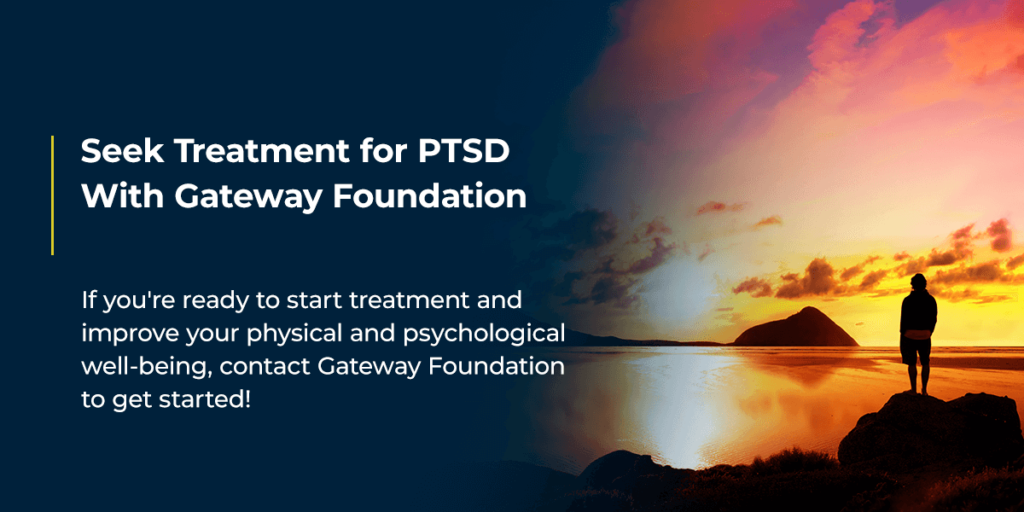- Dec 2
- Mental Health Treatment
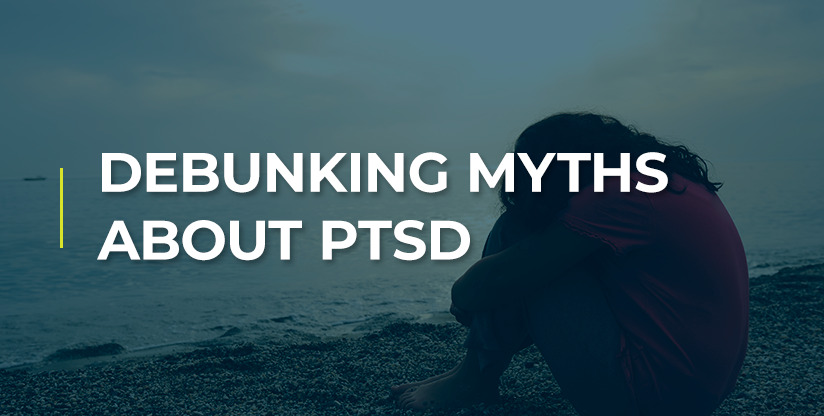
Post-traumatic stress disorder (PTSD) is a medical condition individuals can develop after traumatic experiences. People can develop PTSD from many experiences, including natural disasters, abuse or other life-altering events. Some people may turn to substances to cope with their symptoms and strong emotions.
Some people develop misconceptions regarding PTSD, which creates a stigma within the mental health community that could prevent people from seeking the help they need to improve their health. Failing to seek treatment can cause symptoms to worsen, which could severely impact a person’s quality of life. Learning the truth about PTSD can help eliminate the stigma and encourage people to seek treatment.
10 Myths About PTSD
There are many myths surrounding PTSD and the individuals this mental illness affects. These myths or misconceptions can affect a person’s ability to seek the help they need, reduce their symptoms and improve their quality of life. Below, we’ll debunk the myths related to PTSD and present you with factual information to bring awareness to the condition and help break the stigma.
1. Traumatic Events Always Lead to PTSD
It’s common to have negative experiences, such as a bad day at work or a first date turned sour. However, traumatic experiences are bigger life events that can alter a person’s well-being. Trauma is a word to describe any unexpected negative experience or something you expected to happen that didn’t.
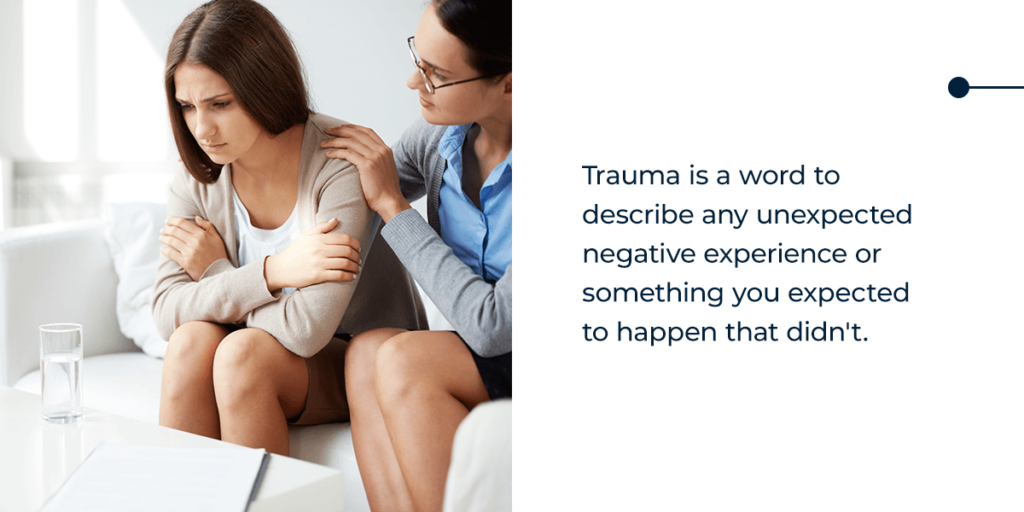
Traumas like sexual assault, natural disaster, combat, witnessing death, severe injury or other life-altering events are called “Big T” traumas, or traumas that are typically one-off events.
A person who goes through a traumatic experience can develop PTSD, and these experiences or events are sometimes more common than we may think. A person can develop acute symptoms of PTSD, but once they process their feelings, they continue to live their life rather than develop the condition. Multiple traumas occurring for a prolonged period can lead to Complex PTSD, or C-PTSD.
There’s a common misconception that someone who lives through a traumatic event will always develop PTSD. However, this isn’t always the case. While exposure to these events can increase a person’s likelihood of developing PTSD, it doesn’t always happen. Many factors play a part in a person’s risk for developing the mental illness, such as access to support, additional stress and family history of PTSD or other mental conditions.
Adverse childhood experiences (ACE) — which more than 60% of adults across 25 states report having at least one occurrence of — have a significant role in developing mental illness, chronic health conditions and other lasting effects.
2. PTSD Is Only for Military Veterans or First Responders
Many commonly hear of PTSD in soldiers or first responders who are often exposed to life-altering events. Engaging in combat or seeing a person get injured or pass away can develop PTSD. Still, the idea that the condition is limited to soldiers or first responders is false.
While both of these fields experience PTSD at high rates, other events can cause a person to develop the condition. Different events that can elicit strong emotions and cause the condition to develop include:
- Sexual or physical assault
- Natural disasters, such as hurricanes, tornados, floods or wildfires
- Severe injury
- Witnessing death
- Accidents
- Abuse
- Bullying
There are numerous ways a person can develop PTSD. Even individuals who weren’t directly involved in an abuse or assault can develop the condition from watching it happen to someone else, a phenomenon called vicarious trauma. Moving away from the idea that PTSD only affects military veterans or first responders is one of the best ways to destigmatize the condition and ensure people can reach out when they need help.
3. PTSD Develops Due to Weakness
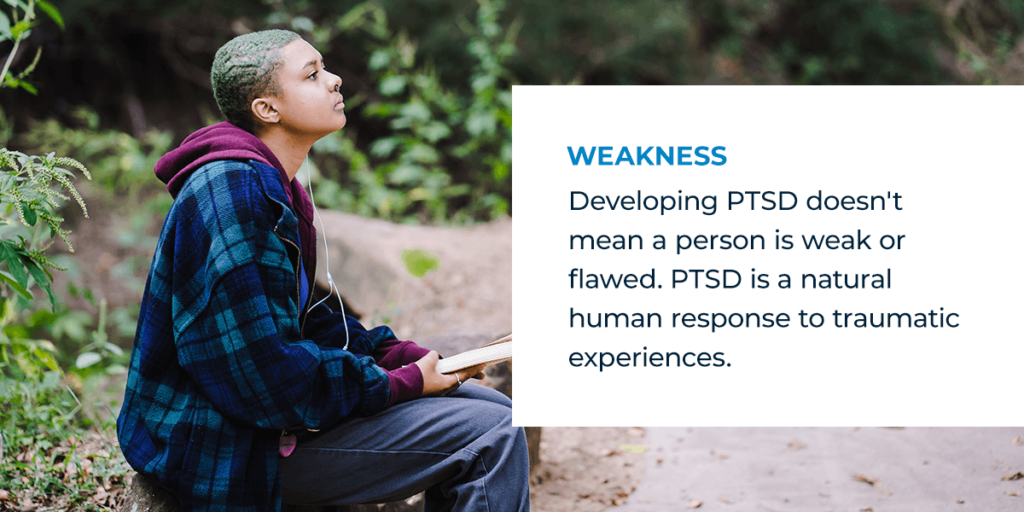
Developing PTSD doesn’t mean a person is weak or flawed. PTSD is a natural human response to traumatic experiences. While not everyone who goes through a traumatic event will develop PTSD, certain factors can contribute to a person’s risk, such as:
- The severity of the trauma
- The type of traumatic experience a person goes through
- A person’s existing neurobiology, such as the presence of other mental health conditions
- The presence or lack of a support network
- The duration of the trauma, whether it was a one-time event sustained over months or years
- The number of traumas a person has experienced compounds on one another
Like any other mental health condition, PTSD results from environmental, social and biological factors. Having depression, anxiety or any other mental health condition isn’t a weakness, so a person who develops PTSD isn’t weak for having a natural response to a life-altering experience.
4. People With PTSD Are Dangerous
There’s a common misconception that people with PTSD are dangerous, and this stigma originates from Hollywood’s representation of mental illness. There are plenty of scenes with soldiers struggling with the condition becoming triggered by something small and becoming violent toward their loved ones. These depictions create a stigma that everyone with PTSD is dangerous and poses a risk to the general public if they become triggered.
The truth about PTSD is that most people don’t engage in violent behavior. In fact, people with mental health conditions like PTSD are more likely to be a victim of violent behaviors than a perpetrator.
While violence is associated with the condition due to media stigmatization, PTSD is actually a condition that impacts a person’s ability to cope with the memory of a traumatic event.
5. PTSD Can’t Be Treated
Some believe that PTSD can’t be treated and that individuals are stuck with the condition for the rest of their life. However, many treatments can help improve a person’s well-being and alleviate symptoms. Some of the treatments available to individuals with PTSD include:
- Psychotherapy: During therapy, you’ll talk with a mental health professional to help address your traumatic experiences and learn how to move on and improve your symptoms. Some types of psychotherapy you might participate in include trauma-informed therapy, cognitive behavioral therapy (CBT), dialectical behavior therapy (DBT) and coping skills therapy.
- Exposure therapy: Exposure therapy is when you work alongside a therapist and expose yourself to the fear related to the trauma. For some people, this could be visiting the site of their trauma. For others, it involves memory exercises to put yourself into a traumatic situation so you can learn to process and cope with the experience.
- Medication: People with PTSD often experience symptoms of depression and anxiety, which can be managed through antidepressants and anti-anxiety medications. These medications can help treat the symptoms so a person can address their trauma through other forms of treatment, such as psychotherapy.
- Support groups: Group therapy is available to individuals struggling with PTSD, helping them connect with people struggling with similar issues. Support groups are an excellent way to share your experiences with people who understand what you’re going through, and you can share your different methods for coping or learning from others. You can even form bonds with people in these groups to develop your support system.
Depending on your circumstances, there may be other forms of treatment that work to help people cope with their symptoms. For example, increasing exercise, changing your diet or improving your sleeping habits can help you manage your PTSD.
6. Seeking Medical Treatment Can Make Symptoms of PTSD Worse
Some believe that seeking medical treatment for PTSD will lead to ostracization, worsening their symptoms rather than helping alleviate them. While it can be challenging to talk with your family or friends about what you’re struggling with, there are millions of people struggling with PTSD. People may misunderstand the condition and believe people are beyond help when diagnosed with it.
Being open and honest about your condition is the first step towards mental health awareness and receiving the treatment you need to improve your well-being. It will also help alleviate stigma and encourage your growth as a person. The stigma surrounding mental health can be challenging to navigate, but don’t let it discourage you from seeking treatment. There are people all over the world struggling with the same disorder who can offer support and help you manage symptoms and improve your mental health.
7. People With PTSD Can’t Function Normally
Another common myth about PTSD is that those with the condition can’t function normally. This misconception often accompanies the idea that people struggling with PTSD are violent or unhinged.
However, the truth is that people with PTSD can function just as well as other people. In many cases, you can’t look at a person and tell whether or not they struggle with the condition. Everyone has their off days when struggling with mental illness, but it’s not a daily occurrence. There are days when people struggling with the disorder may not experience any symptoms.
With the proper support and treatment, a person struggling with PTSD can live a normal and happy life. Some people even find complete relief from their trauma after consistent treatment.
8. Complex PTSD Isn’t as Bad as Other Forms of PTSD
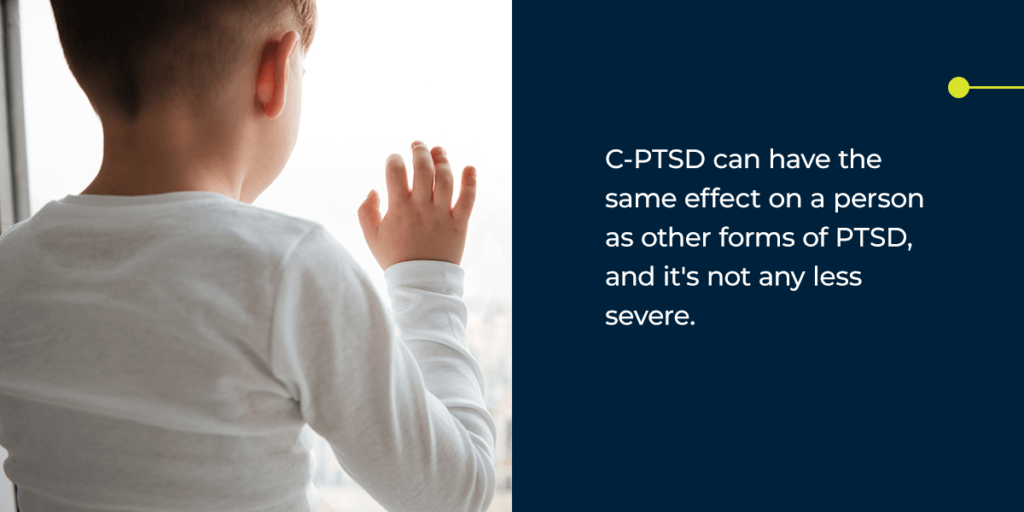
Complex PTSD, also called C-PTSD, is when a person experiences multiple traumatic events over the course of months or years. A child in an abusive home or a person in a violent domestic relationship might develop C-PTSD. When a person experiences compounding trauma, it induces psychological and brain chemical changes, which can cause problems with understanding their emotions or emotional hypersensitivity.
C-PTSD can have the same effect on a person as other forms of PTSD, and it’s not any less severe. The imbalance of chemicals in the brain can create anxiety, depression, brain fog and difficulty keeping up with or completing basic tasks.
Some reasons a person can develop C-PTSD include:
- Growing up in a dysfunctional home
- Being a prisoner of war or being held captive
- Consistent sexual, physical or emotional abuse
- Consistent gaslighting, manipulation or invalidation
PTSD and C-PTSD are conditions outside of a person’s control. It’s essential not to compare the different forms and try to label one as more severe than the other, potentially contributing to further stigmatization of mental health conditions.
9. PTSD Will Go Away With Time
PTSD is caused by an association between distressing thoughts or behaviors and a trigger or experience. Many of these associations are strong in a person’s mind, and it can take years to break them. It also takes a lot of work to unravel the traumatic experience and learn how to cope. Some people with PTSD may avoid treatment for many reasons, whether due to the stigma surrounding the condition or because they don’t want to talk about their traumatic experience.
However, treatment is essential to recovering from PTSD. While some people may experience a reduction or their symptoms over time, it depends on the type of trauma experienced, mental health conditions, personality and other factors. These factors will determine if a person’s PTSD will fade over time, so it’s untrue to say all cases of PTSD will disappear after a while.
Seeking help is the quickest and most efficient way to improve your symptoms. Professional treatment can also give you a better idea of what recovery might look like for you and help you return to your everyday life.
10. Everyone With PTSD Experiences the Same Symptoms
PTSD can manifest very differently for different people, depending on their traumatic experience, personality and other factors. There are numerous symptoms and the way that they can present. The fifth version of the Diagnostic and Statistical Manual of Mental Disorders (DSM-5) outlines the diagnostic criteria for the condition. They characterize PTSD in four categories, which include:
- Re-experiencing symptoms: Any symptoms related to re-experiencing the traumatic event, such as nightmares, flashbacks or intrusive thoughts.
- Avoidance behaviors: Behaviors that actively avoid triggers, thoughts or places related to the trauma.
- Negative mood and thoughts: Challenges with recalling the trauma and illogical or unusual thoughts about why a person experienced their trauma.
- Arousal symptoms: Startling easily, experiencing anxiety, challenges concentrating or difficulty sleeping.
For a person to be diagnosed with PTSD, a person must have at least one symptom from each cluster. A range of symptoms fall under these clusters, so a person can have a combination of symptoms that are different from another person struggling with PTSD. While one person may experience nightmares and trouble concentrating, another person might have problems sleeping and experience flashbacks when they’re triggered in their daily lives.
There isn’t a single way for PTSD to arise, and symptoms vary even more based on the trauma a person goes through and their personality or upbringing. Assuming PTSD presents the same way for everyone contributes to the stigma and can make it more challenging for individuals to seek help.
Seek Treatment for PTSD With Gateway Foundation
If you struggle with PTSD and substance use, Gateway Foundation is here to help. Mental health and substance use disorders often occur side-by-side, so our professional team of specialists treats both conditions simultaneously to treat the route of a person’s addiction and prevent relapse. We have various levels of care to accommodate different severities of addiction and mental health concerns.
Our trauma-informed therapy program can help you address your traumatic experiences and learn healthy coping methods. This form of therapy is essential for people with PTSD to learn how to manage their condition and symptoms without relying on substances. You’ll also engage in other forms of treatment to address your substance use and help you find relief from your mental health and addiction symptoms. If you’re ready to start treatment and improve your physical and psychological well-being, contact Gateway Foundation to get started!

